
Griffiths, Annual Report of the Missouri Botanical Garden 21: 167, 1910
Holotype; Holotype (O. laxiflora); Isotype; Isotype (O. laxiflora); Herbarium (submitted as O. lindheimeri); Herbarium (O. cyanella); Herbarium (O. gilvoalba); Photograph (O. gilvoalba); Herbarium; O. gomei (painting); O. gomei (painting, O. laxiflora)
Original Description
What is Opuntia gomei?
Opuntia gomei is a common prickly pear near the Rio Grande River delta, but it may occur inland somewhat on the South Texas Plains. Britton and Rose conflated it with O. lindheimeri, but it is a distinct stand-alone species and intermediates are not found.
Details
O. gomei may form large shrubs 1-1.5 m tall and up to 3 m across. Major branches of this opuntia often rest upon the ground and other branches arise from them. Old, large cacti often contain dead material in the centers. Large cladodes may be roundish and 40 to 60 cm (or more) in diameter. The largish pads are often scalloped. The yellow spines are erect and divergent. The spines are 2-4(5) cm long, and there are often 2-4(5) spines per areole, which are stout, straight, and not curved. Glochids are abundant and prominent in this opuntia, up to 1 cm. The glochids may fill the entire areole as is the case with O. lindheimeri.
The flowers are yellow, but red flowers have been reported as well as magenta or white flowers. The stigma is large and bright deep-green. The fruits are reddish-purple.
Ploidy is unknown.
Other Notes
O. gomei appears to be synonymous with O. gilvoalba, O. laxiflora, and O. cyanella.
There are many red-flowered plants on this page, but the species is typically yellow-flowered. Red-flowered plants are collected for gardens where some of these photographs were taken.
Young plants are handsome and the yellow spines make a focal point for any garden. However, O. gomei is a large plant and is not suitable for smaller gardens. It may be hardy to 10F or perhaps a bit colder.
Because it is found in the Rio Grande River delta on slight elevations, it is likely the species tolerates salts and occasional flooding.
For more information, see:
Garcia-Morales, L.G., Garcia-Jimenez J., Contreras-Medina R., Alcántara-Ayala O., and Luna-Vega I. (2022) Diversity, distribution, and conservation of the Cactaceae (Caryophyllales) from Tamaulipas, Mexico, Biodiversity and Conservation. 156:1405.

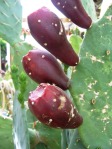
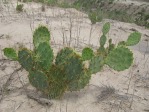
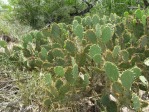
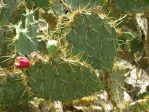
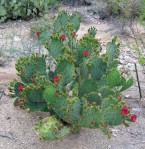
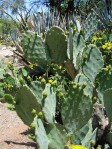
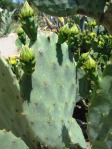

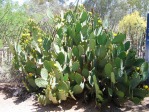
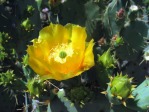

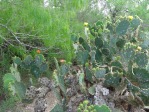
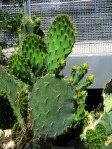
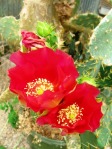
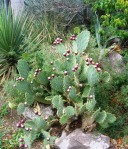


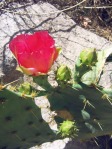
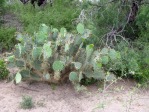
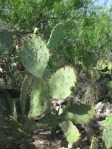

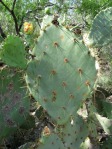
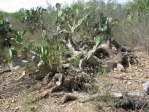
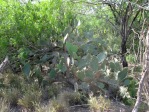
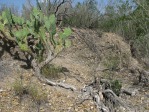
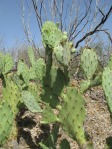
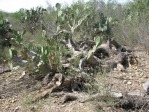
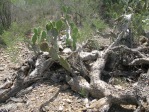
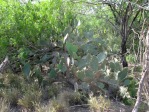
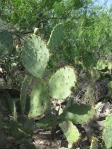


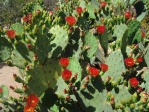
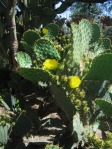
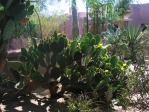
What are the differences between Opuntia gomei and Opuntia undulata?
Thanks
Carlos
Opuntia undulata is a tropical plant and is unlikely to grow north of south Texas or southern California. O. gomei is more cold tolerant. Also, O. gomei has lots of spines, whereas O. undulata has not spines.